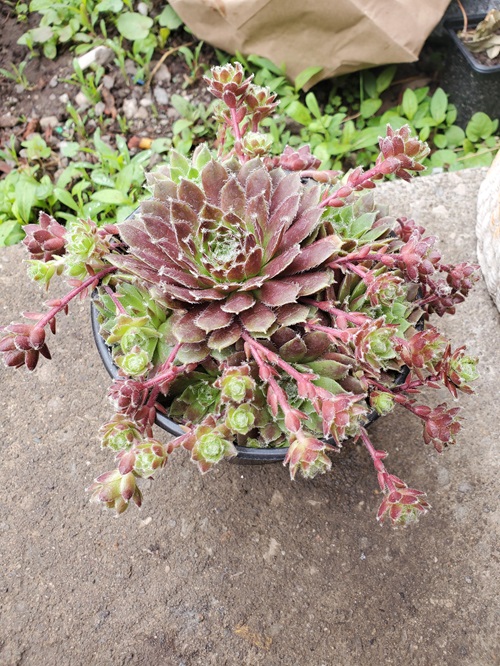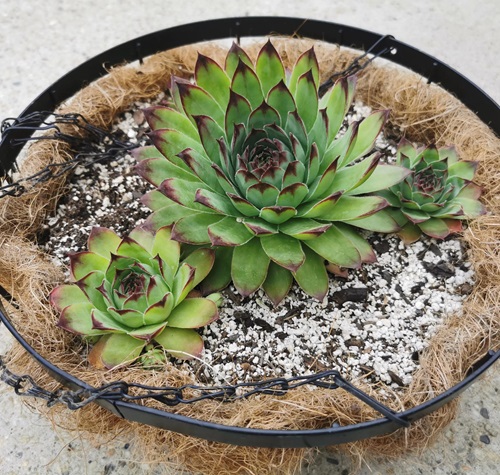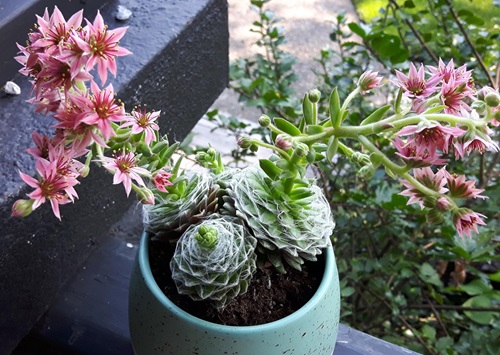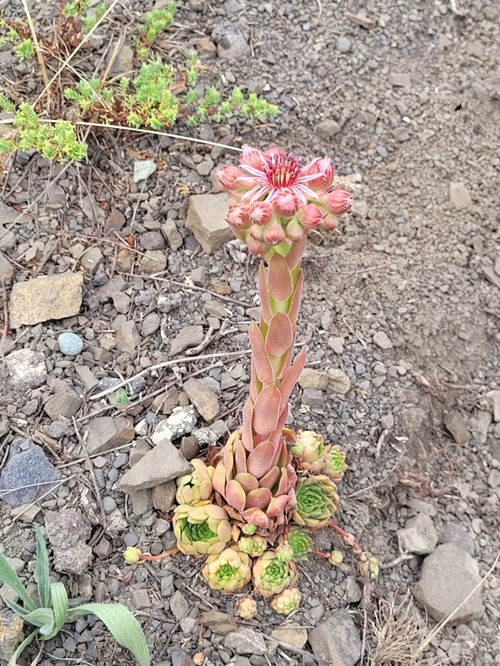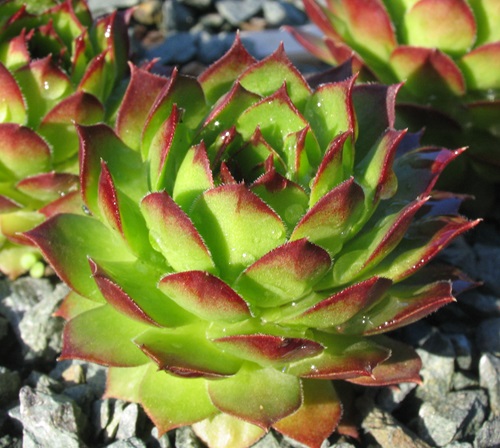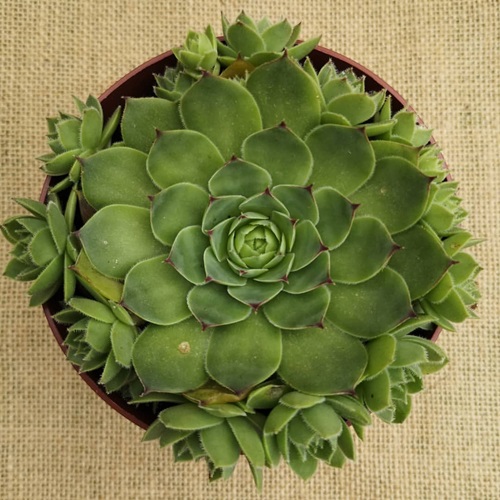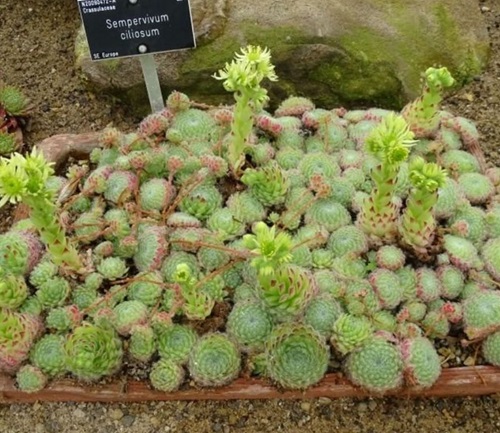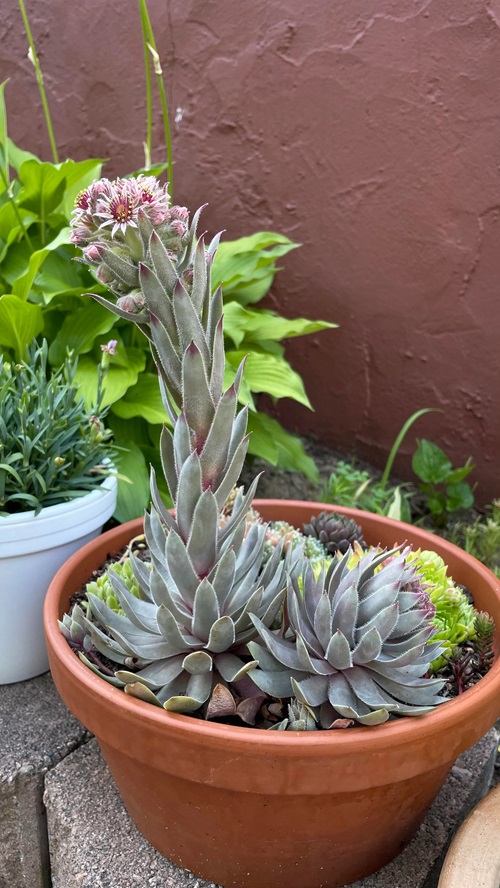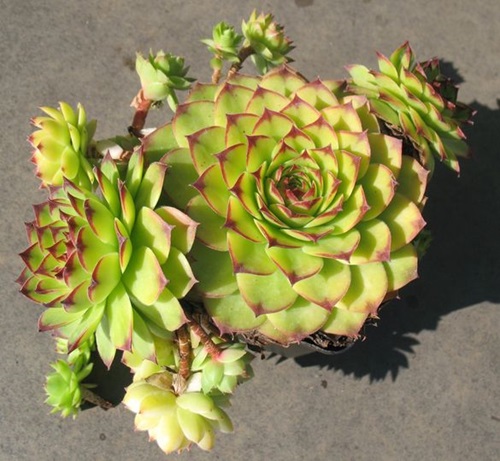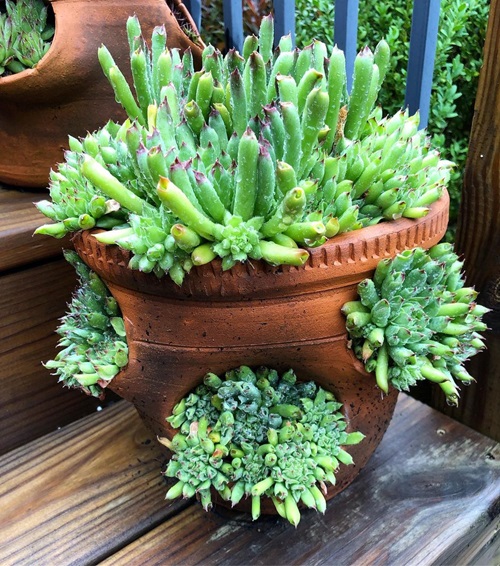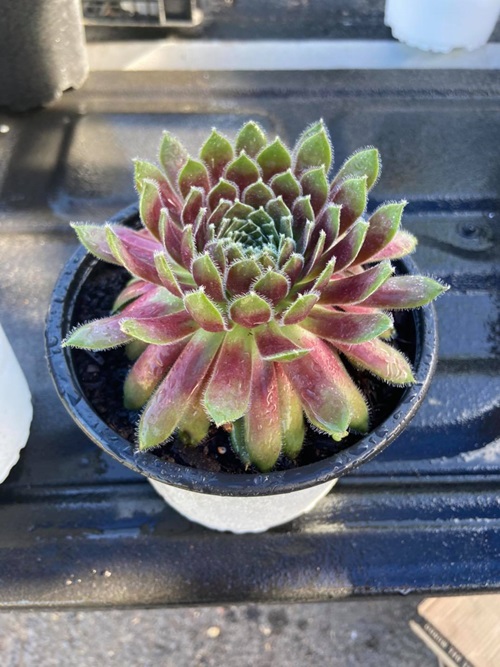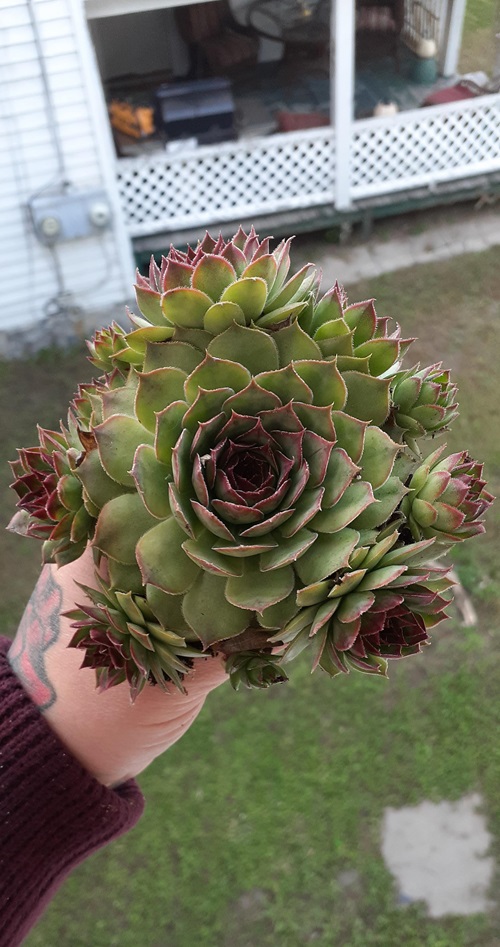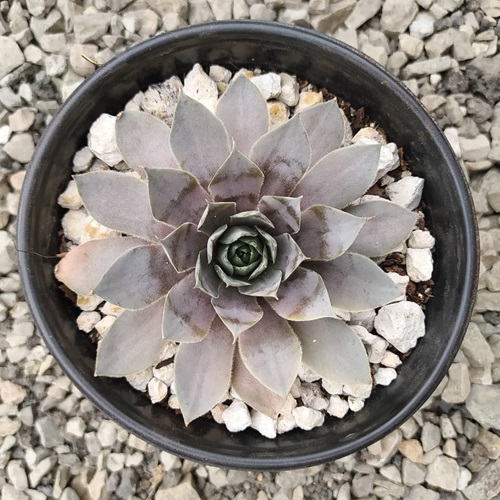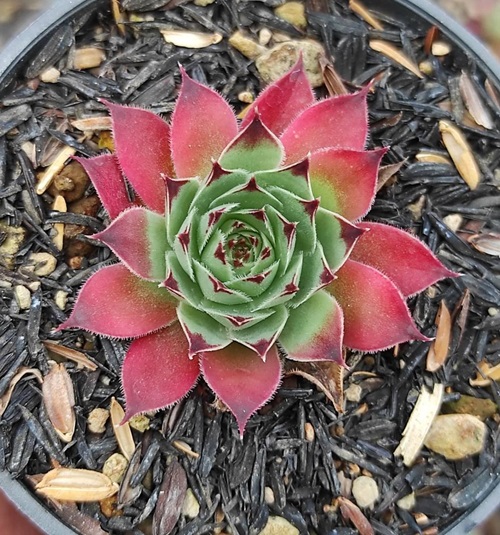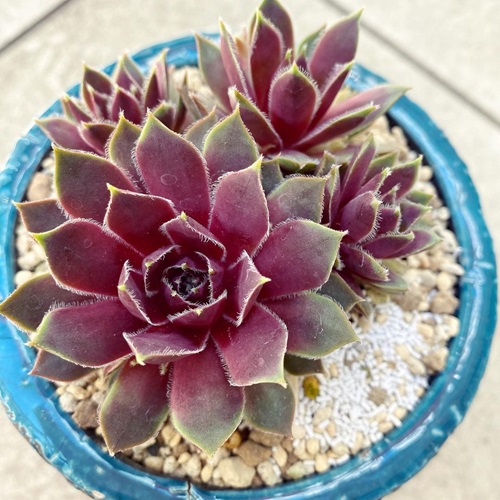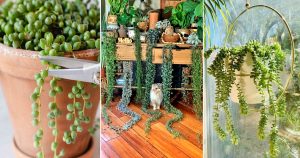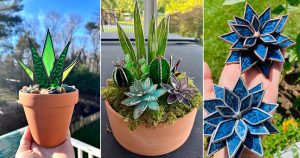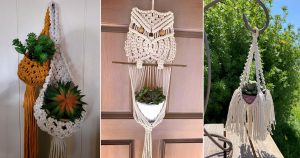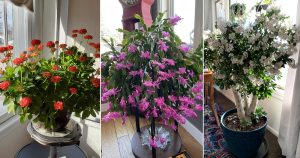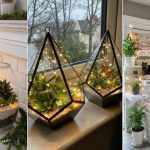Are you obsessed with Houseleeks? Well, they are truly pretty succulents but how many types of Sempervivums do you know?
Sempervivum, also known as “Hens and Chickens” is a genus of hardy, drought-resistant succulent plants popular for their rosette structure. We have compiled some of the different types of Sempervivums around the globe in this listicle!
What are Sempervivums?
Sempervivum is a genus of monocarpic succulents of the Crassulaceae family. According to various sources, there are about 50 species and approximately 4000 cultivars of different sizes, colors, and shapes. Here we are going to talk about some of the popular ones.
The basic structure of these succulents is mainly a rosette pattern and many times people are confused in distinguishing them from Echeverias or Graptopetalums due to their similar appearances. Mostly, their habitats are highlands or mountains and terrains. Spread over Morocco to Iran, through the mountains of Iberia, the Alps, the Carpathians, Turkey, the Sahara, and the Caucasus.
The interesting fact about Sempervivum is that its common name “Liveforever” derives from the generic name and it refers to its hardiness and durability. Again the common name “Hens and Chicks” refers to their appearance. The mature rosette “Hen” produces many offsets or pups and refers to “Chicks” around them at the end of their lifecycle.
20 Different Types of Sempervivums
1. Common Houseleek
Botanical Name: Sempervivum tectorum
Originating from Europe the Common houseleeks or Bullock’s beards are evergreen perennials with green fleshy rosettes with reddish tips. Grows up to 10 cm in diameter. The rosettes are blue-green and the tips are red-purple.
They are traditionally grown on rooftops or as ground covers for their hardiness. Additionally, starry purple flowers also appear on long stems from the mature rosettes.
2. Cobweb Houseleek
Botanical Name: Sempervivum arachnoideum
Coming straight to the interesting feature of the Cobweb houseleek is that it has web-like white hairs at the tips of the rosettes. Besides, it has small green or red rosettes and grows up to 1 inch in diameter.
Don’t get scared as it looks like a spider web is spun over the plant. Lastly, it also has starry pink flowers that bloom on stems that rise about 12 cm approximately.
3. Sempervivum calcareum
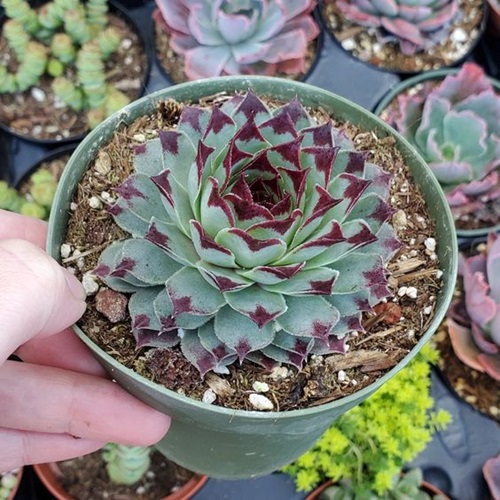
Botanical Name: Sempervivum calcareum
Native to the southern Alps in Europe is also an evergreen perennial succulent. This Sempervivum is almost similar to the Common Houseleeks in terms of their color and appearance. They have medium rosettes with blue-green leaves and reddish-purple tips. They beautifully thrive in rocky, limestone-rich soil.
4. Mountain Houseleek

Botanical Name: Sempervivum montanum
“Montanum” means “on mountains” which refers to the habitat in mountainous regions. Mountain houseleeks are native to southern and central European mountains ranging from the Carpathians to the Pyrenees. Comprises dense, dark green medium rosettes with pinkish hues.
5. Rolling Hen-and-Chickens
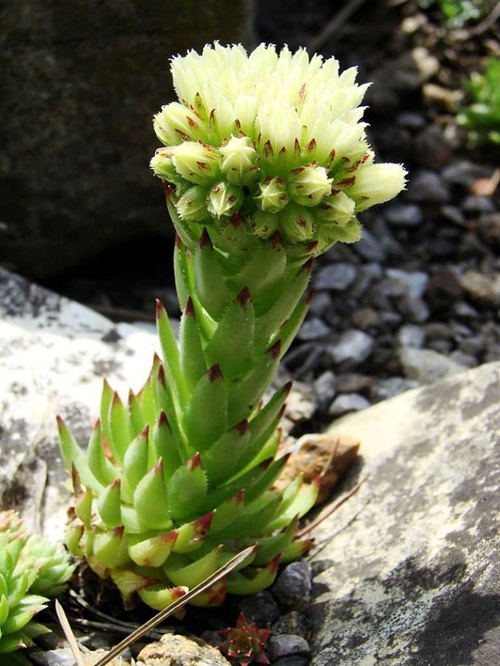
Botanical Name: Sempervivum globiferum
Among the tiniest species of Sempervivums, commonly known as Rolling Hen and Chicks due to their compact green or yellowish green rosettes in spherical shape and structure. Additionally, the leaves are fleshy, and stubby, measuring just about an inch in length.
A mature rosette doesn’t grow more than 2 inches in diameter although there are some not-so-commonly available exceptionally larger species in the wild.
6. Job’s Beard
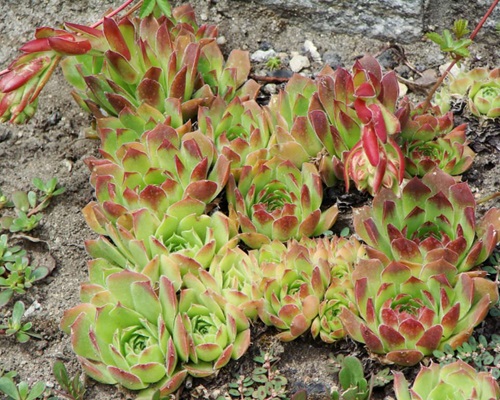
Botanical Name: Sempervivum heuffelii
Job’s Beard originates from East Europe, Albania, Bulgaria, Greece, Serbia, and Romania. It grows as a natural weed in Ashland County, northern Wisconsin as well. Flowers once at the end of their lifecycle, are perennial herbs with a remarkable variety of colors.
Surprisingly the leaves have sharp pointed edges with orange tips, yellow in the mid portion, and light green at the center. The color remains constant throughout the year and is hence one of the beautiful colorful succulent species.
7. Iranian Houseleek
Botanical Name: Sempervivum iranicum
Sempervivum iranicum also called Iranian Houseleek is a perennial succulent with fleshy, green to light green, spoon-shaped leaves and small, star-shaped yellow flowers. It is native to the Mediterranean region and typically grows in rocky, dry habitats. A popular ornamental plant, often used in rock gardens and as a ground cover.
Fact: The leaves of this plant are used in salads as a garnish. Moreover, the leaves have certain medicinal properties used to treat several ailments.
8. Sempervivum armenum
Botanical Name: Sempervivum armenum
Also grown as ground covers due to their mat-forming habits can reach up to a height of 2-6 centimeters. Generally, native to Northern Turkey, this is also an evergreen succulent that has green leaves arranged in rosettes. Additionally, they love to grow under the sunlight in moist soil.
9. Sempervivum grandiflorum
Botanical Name: Sempervivum grandiflorum
A popular ornamental colorful succulent, originating from southwestern Switzerland and northwestern Italy. Generally, it is a small, hardy succulent with green rosettes edged with red tips and covered with short, soft hairs. They can grow up to 6 inches in diameter and the flowering stems up to 8 inches tall. The hairy leaves are slightly sticky to the touch.
10. Teneriffe Houseleek
Botanical Name: Sempervivum ciliosum
One more tiny cute succulent that forms a mat of small rosettes of fleshy, gray-green, pointed, and hairy leaves. The fun fact is that the rosettes are depressed-globose. close or half opened.
Additionally, they can grow up to 2 inches in diameter only. During summer, the mature rosettes produce greenish-yellow flowers on stalks of 4 inches tall.
Popular Hybrid Sempervivum Varieties
11. Sempervivum ‘Pacific Blue Ice’
Got its name due to the blue-green matte rosettes with pinkish tips during the cooler months. This beauty is a hardy perennial as well. The flower stalk arises during the summer from the center of the mature rosettes and bears pink star-shaped flowers.
Surprisingly, it is a hybrid variety of Sempervivum created by Gary Gossett in 1998 in the U.S.
12. Sempervivum ‘Ruby Heart’
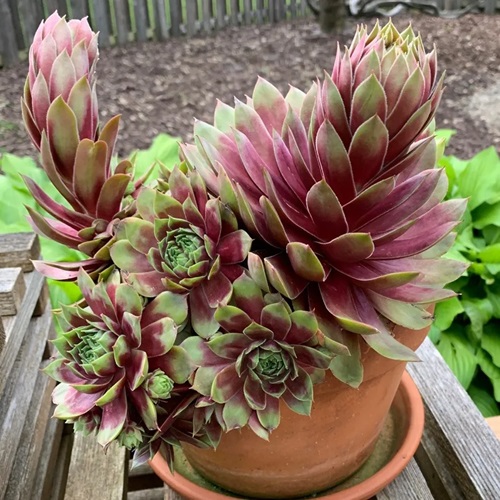
Laying a dramatic contrast between green and red leaves this is a strikingly beautiful hybrid. The green leaves are infused with a deep red center forming medium-sized rosettes.
Interestingly, the color varies by season i.e., intensifying during winters and again displaying a lighter shade during the summers.
13. Sempervivum ‘Royanum’
Popular as “Royanums”, these are medium-sized to large hybrid Sempervivums with green rosettes and a distinct reddish margin on the pointed tips of the rosettes. They can reach up to a height of 20 cm and 12-13 cm in diameter. Mostly used to decorate rock gardens and landscaping as ground covers.
Fact: Royanums are extremely sensitive to overwatering.
14. Sempervivum ‘Oddity’
A rare houseplant with unique features like green tubular leaves that curl inward with red tips, giving it an alien-like appearance forming medium-sized rosettes. Originating from the US and hybridized by Sandy MacPherson. The unusual leaf structure makes it any collector’s favorite on the list!
15. Sempervivum ‘Red Lion’
Featuring dark red or wine red rosettes that deepen in color during colder months, the “Red Lion” is a graceful succulent variety of Sempervivum with a gorgeous appearance.
The rosettes are medium in size and the deep red color expands in the outer leaves with the center not so red but rather green. This dramatic appeal will definitely steal the hearts of all plant lovers.
16. Sempervivum ‘Black’
A black beauty in the house! This beautiful hybrid gleams under the sunlight. The color ranges from deep, dark purple to almost black medium-sized rosettes. Additionally, they are one of the darkest varieties available, great for contrasting plant arrangements.
17. Sempervivum ‘Silverine’
Getting to the best in the last! “Silverine” are another popular hybrid houseleeks with silvery-green rosettes or sometimes have a bit of purple appearance and soft pink tips. These are again small to medium-size rosettes with a reflective, silvery appearance that makes them stand out, especially under the sunlight.
18. Sempervivum ‘Twilight Blue’
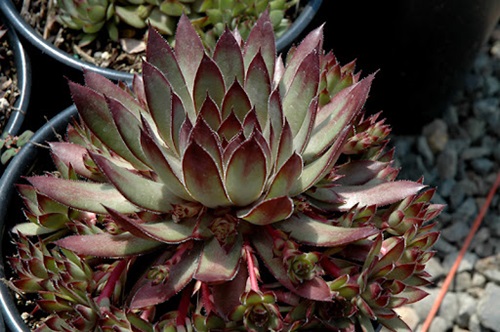
As the name suggests, the Twilight blue Sempervivum is a hybrid with fleshy leaves forming rosettes to 15 cm in diameter. The rosettes are bluish with deep purple undersides. Additionally, the dual-toned effect creates an eye-catching contrast. The mature rosettes bear star-shaped pink flowers during summer.
19. Sempervivum ‘Fire Dragon’
Known as the easiest to grow among other Sempervivums. Comprises of vivid red and green rosettes that appear fiery and feisty! Surprisingly, very useful in rock garden decors like most of them as almost all Sempervivums are used for ground covers and rock garden decors. Moreover, they are an excellent choice for use in striking color-themed garden arrangements.
20. Sempervivum ‘Irazu’
Last on the list but not in the world! By this time we can say that almost all Sempervivums have slightly the same features but differ in color growing habits and so on. So, our last Sempervivum is no less than any other beauty. It is a dark maroon-centered succulent with green leaves on the outer layer.
Mostly, appear to be medium-sized to large rosettes. Undoubtedly, the combination of dark and light gives it a spectacular appearance!
Now you know that each type of Sempervivums has its own unique charm, making them highly popular among gardeners and collectors. Let us know which one is your favorite among these in the comments section below!

